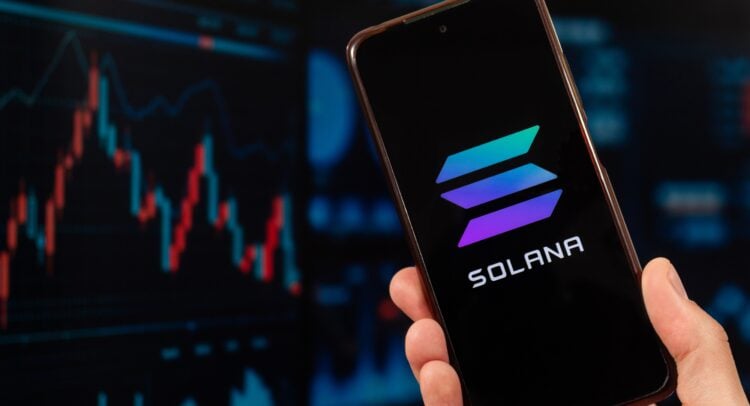Solana (SOL-USD) has never been shy about its pitch that it wants to be the fastest blockchain in the world. But with the new Alpenglow upgrade, it is trying to leapfrog not just its crypto rivals but even tech giants like Google (GOOGL).
Elevate Your Investing Strategy:
- Take advantage of TipRanks Premium at 50% off! Unlock powerful investing tools, advanced data, and expert analyst insights to help you invest with confidence.
Almost 99% of validators voted in favor of the proposal, which reduces transaction finality from nearly 13 seconds to a staggering 100–150 milliseconds. For perspective, that’s the blink of an eye — and it’s faster than the average Google search, which clocks in around 200 milliseconds. It’s also on par with Visa’s (V) payment processing speeds.
If Alpenglow works as advertised, crypto transactions could feel instantaneous. This means traders, gamers, and businesses could interact with blockchain applications as seamlessly as they use mainstream apps today.
Rivals Struggle to Keep Up
Even before Alpenglow, Solana had carved a reputation as the fastest major chain. Its 12.8-second finality already gave it an edge over Ethereum, which often requires several minutes for true settlement. Competitors like Sui have made progress with 400-millisecond finality, but Solana’s new target cuts that number by more than half.
The implications are huge. For decentralized exchanges, where speed can mean the difference between profit and loss, sub-second settlement could finally match centralized platforms. For blockchain gaming, it means no more awkward delays when executing trades or moves. And for payments, it could make stablecoin transfers as fast and as smooth as tapping a credit card.
How the Upgrade Works
At the heart of Alpenglow are two new systems, Votor and Rotor, which overhaul how Solana reaches consensus. Instead of validators needing multiple rounds of communication to confirm transactions, these mechanisms streamline the process to near-instant speeds — without sacrificing security.
The upgrade also introduces Validator Admission Tickets (VATs) to make it cheaper and simpler for new validators to join the network. And with Solana’s “20/20” resilience model, which tolerates 20% of validators failing and another 20% acting maliciously, the network gets stronger against real-world disruptions.
In plain English, Solana is trying to prove you can have both speed and safety.
Governance Shows Rare Unity
The Alpenglow vote also marked a milestone in decentralized governance. Over 52% of Solana’s stake participated, with nearly 99% support. In a world where most crypto upgrades spark division, this level of consensus is remarkable. It shows how aligned the Solana community is about pushing the boundaries of performance.
The Risks Still Linger
But not everything is solved. Solana still relies almost entirely on Agave, its main validator client. If Agave fails, the whole network feels the pain. Relief could come with Firedancer, a new client built by Jump Crypto that is expected to hit mainnet in phases later this year.
There are also centralization concerns. While VATs are designed to lower entry barriers, critics argue larger validators may still benefit disproportionately, consolidating power in fewer hands. This is a trade-off Solana must carefully manage if it wants to scale without sacrificing decentralization.
The Upgrade Enables More than Just Speed
The headline figure of 150 milliseconds is eye-catching, but the real story is what this enables. In DeFi, traders can finally rely on real-time order books. In gaming, blockchain interactions become smooth and seamless. And in payments, Solana could become a legitimate rival to credit card networks.
Institutions are already noticing. Tokenized real-world assets on Solana have hit $390 million, total value locked (TVL) exceeds $8.6 billion, and big names like HSBC (HSBC) and Euroclear are piloting projects on the network. With staking yields around 7% and ETF inflows piling in, Solana is clearly attracting not just retail hype but enterprise-grade capital.
What Comes Next
A testnet launch for Alpenglow is scheduled for December at Solana’s Breakpoint conference, with mainnet upgrade planned in Q1 2026. Firedancer will roll out in parallel, diversifying Solana’s validator clients and boosting throughput to over 1 million transactions per second in testing.
If Solana executes, the combination of Alpenglow’s speed and Firedancer’s resilience could cement its place as the blockchain built not just for retail traders but for the future of global finance.
At the time of writing, Solana is sitting at $218.45.

















